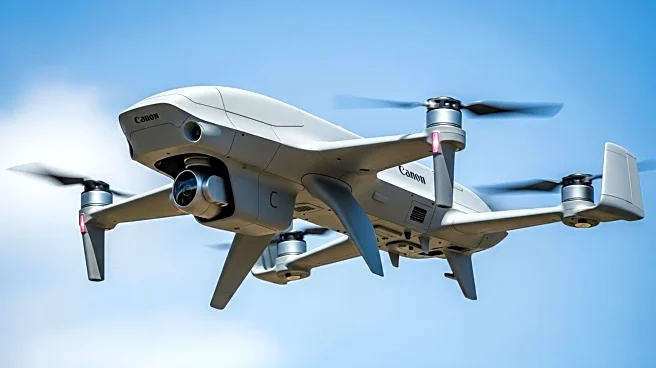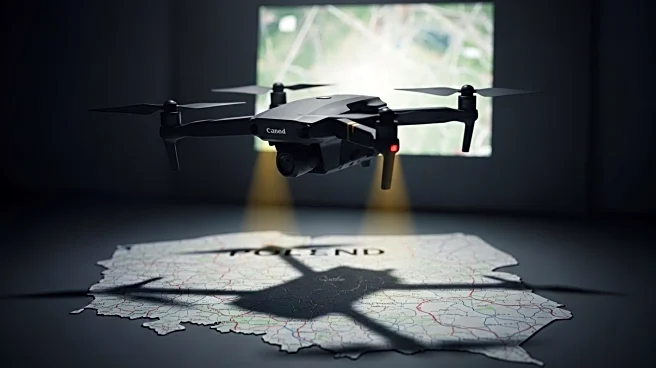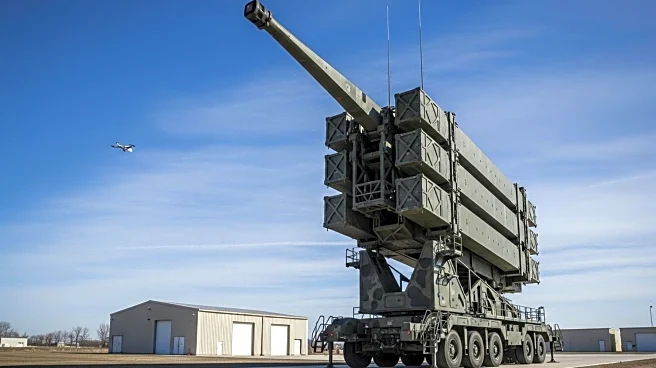What's Happening?
Frankenburg Technologies, an Estonian firm, has developed a short-range anti-drone missile, the Frankenburg Mk 1, with a unit cost of approximately $65,000. This missile, described as the smallest guided missile in the world, can be fired from various platforms, including ships, aircraft, drones, and armored vehicles. The development aims to address the high costs associated with shooting down drones, as demonstrated by the Royal Navy's HMS Diamond, which spent an estimated $25 million on missiles during its Red Sea deployment. The Frankenburg Mk 1 offers a more economical solution, potentially allowing for widespread deployment across naval and other defense applications.
Why It's Important?
The introduction of the Frankenburg Mk 1 addresses the economic imbalance in drone warfare, where defending against drones often incurs higher costs than deploying them. This missile provides a cost-effective alternative, enabling more platforms to be equipped with anti-drone capabilities. The ability to manufacture hundreds of missiles weekly could significantly enhance defense readiness and reduce the financial burden on military budgets. As drones become strategic weapons of disruption, affordable countermeasures are essential for maintaining security and protecting maritime trade.
What's Next?
Frankenburg Technologies is undergoing field trials in Ukraine, which could lead to broader adoption of the Mk 1 missile. The firm aims to transition Western procurement processes to more agile contracting, reflecting the urgent need for effective counter-drone solutions. The success of these trials and subsequent procurement decisions will determine the missile's impact on global defense strategies. As drone threats continue to rise, the demand for cost-effective countermeasures is likely to increase, prompting further innovation in missile technology.












